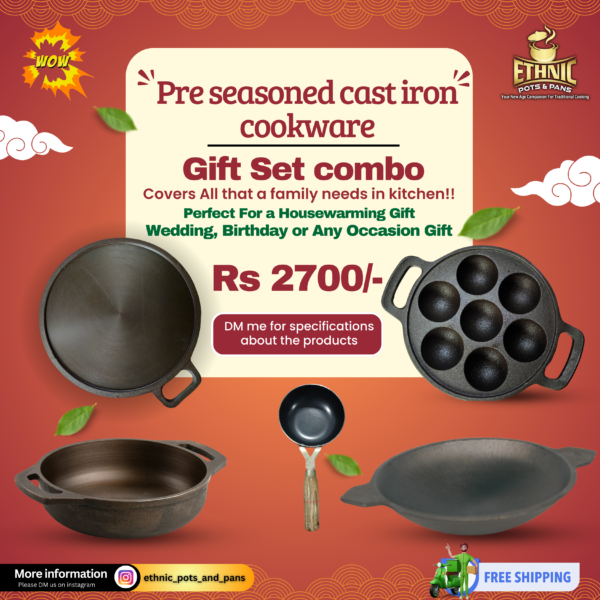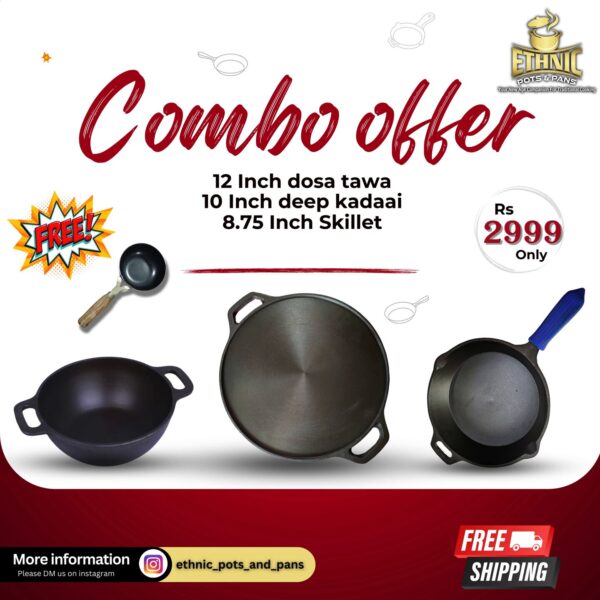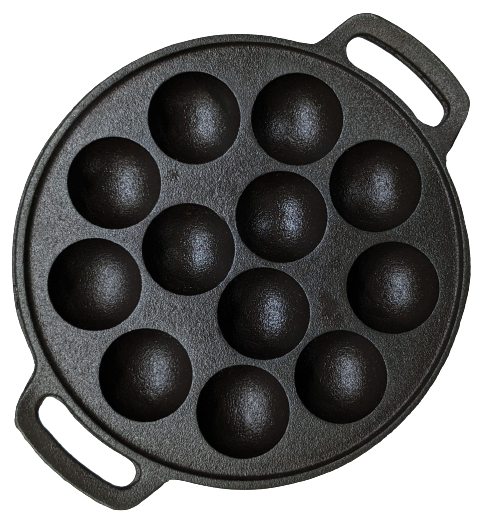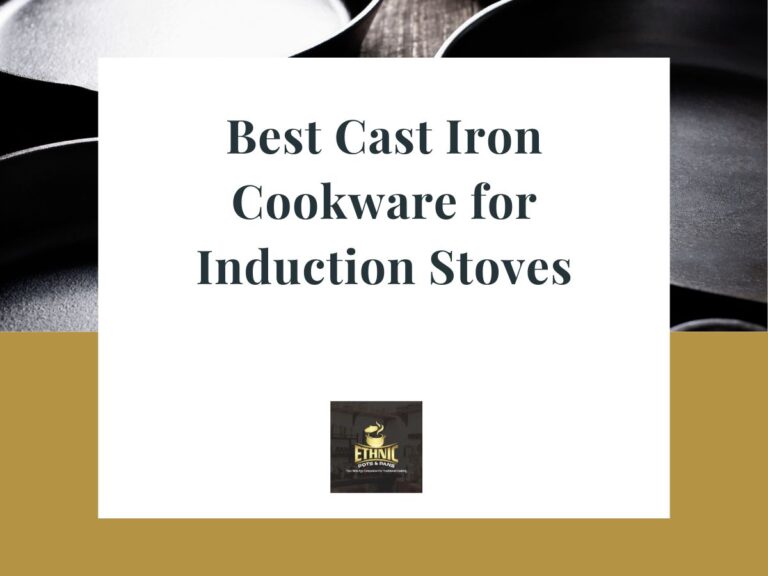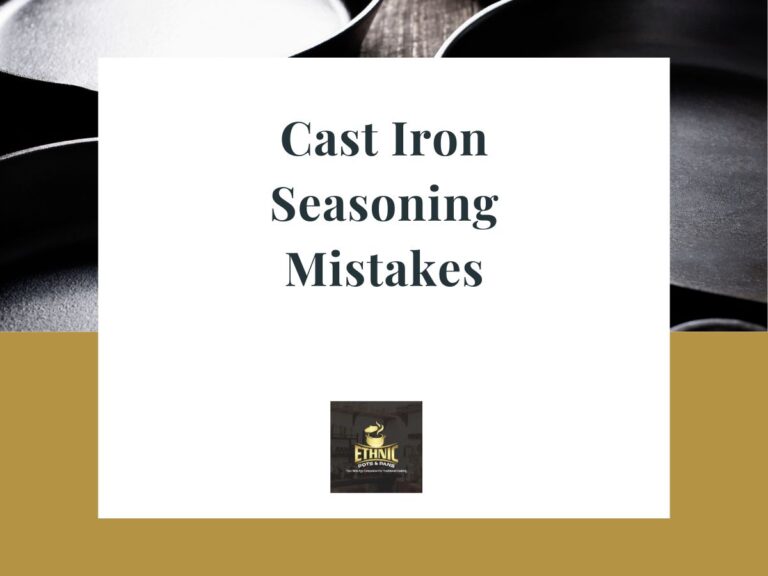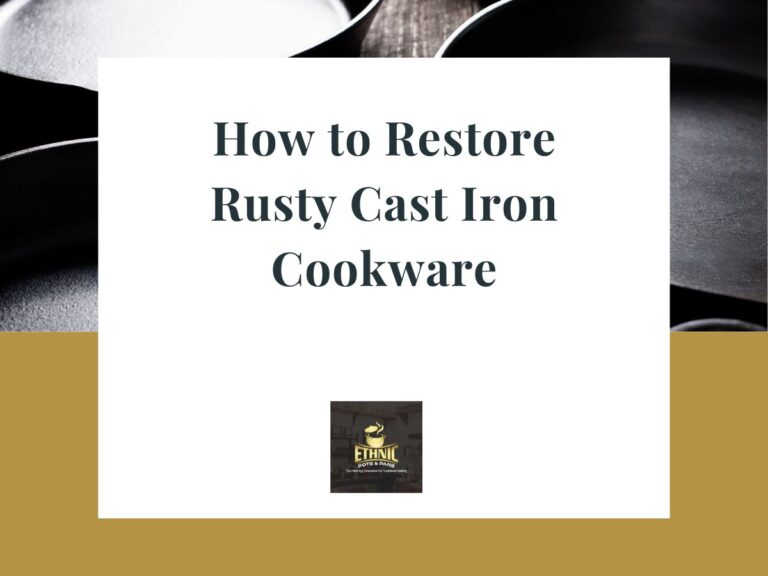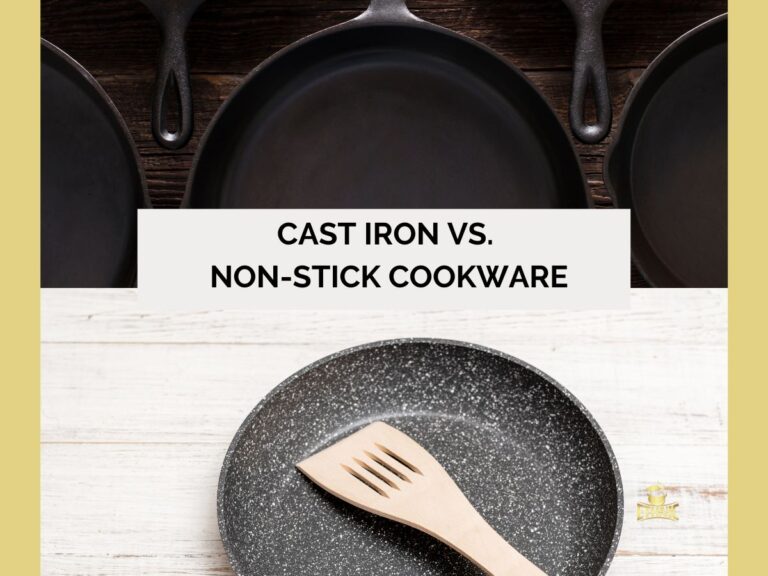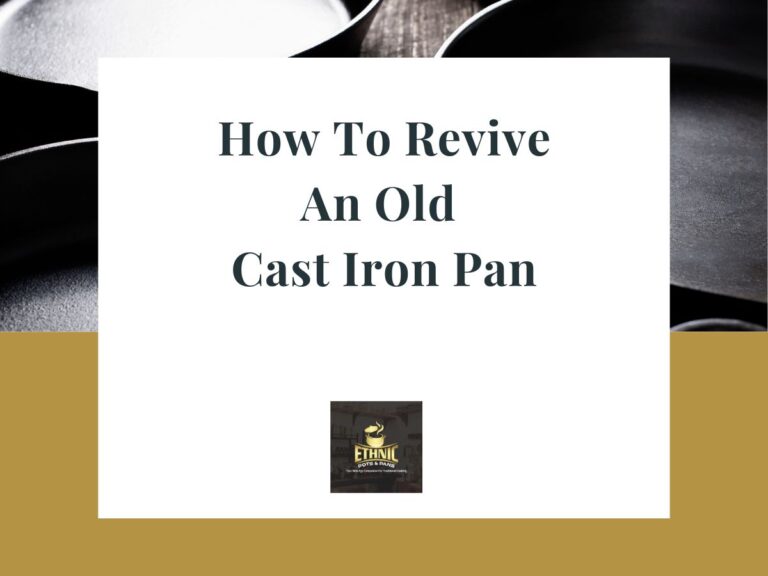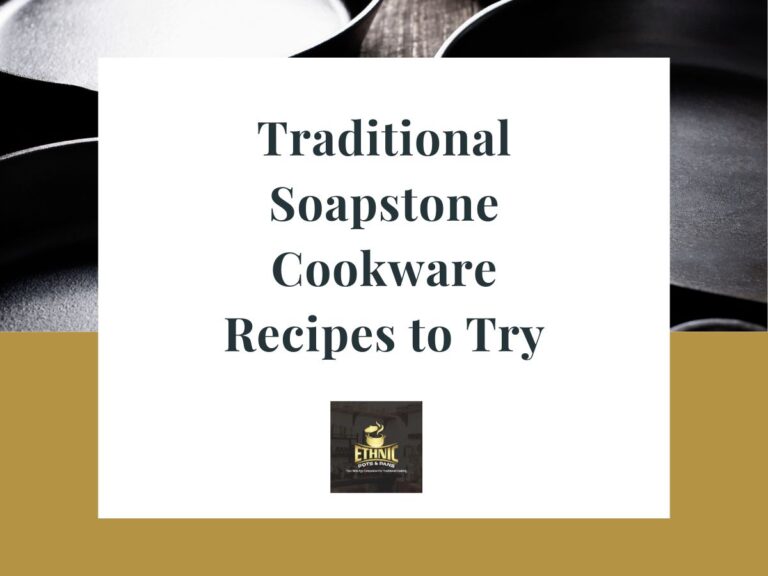Cast iron cookware has been a staple in kitchens around the world for centuries, prized for its durability, versatility, and ability to retain heat. Whether you’re a home cook or a professional chef, understanding how to use and care for cast iron can elevate your cooking experience. However, cast iron for beginners can seem intimidating with its reputation for requiring special care and seasoning. This guide will demystify cast iron and provide everything you need to know to start cooking with confidence.
What is Cast Iron?
Cast iron is an alloy made primarily from iron, carbon, and silicon, poured into molds and shaped into cookware, like skillets, Dutch ovens, and griddles. Its unique properties make it extremely durable and long-lasting, often being passed down through generations. Cast iron heats evenly and retains heat well, making it ideal for slow-cooking, frying, baking, and searing.
Why Choose Cast Iron?
Before diving into the technical aspects, it’s essential to understand why cast iron is so beloved. Here are some of the benefits:
1. Durability: Cast iron is nearly indestructible and can last for decades, if not centuries, with proper care.
2. Versatility: You can use cast iron on various heat sources, including stovetops, ovens, grills, and even over open fires.
3. Natural Non-Stick: A well-seasoned cast iron pan develops a natural non-stick surface, improving with use over time.
4. Heat Retention: Cast iron holds heat much longer than other types of cookware, making it perfect for searing meats or slow-cooking stews.
5. Health Benefits: Cooking with cast iron can boost your iron intake, especially beneficial for those who have iron deficiencies.
Suggested Reading: Does Cast Iron Cookware Work On Induction?
Types of Cast Iron Cookware
There are several types of cast iron cookware, each suited for different tasks. For beginners, it’s helpful to start with the basics:
1. Cast Iron Skillet: The most common and versatile piece of cast iron cookware. It’s great for frying, searing, and baking.
2. Dutch Oven: A large, heavy pot with a tight-fitting lid, perfect for slow-cooking stews, soups, and roasts.
3. Griddle: A flat cooking surface for making pancakes, tortillas, and grilled sandwiches.
4. Grill Pan: A skillet with raised ridges that give food grill marks and allow fat to drain away.
-
Beginners Combo/ Gift Set Combo – Pre-seasoned cast iron Combo
Original price was: ₹4,999.00.₹2,700.00Current price is: ₹2,700.00. -
Best Cooking Essentials Combo
Original price was: ₹5,999.00.₹2,999.00Current price is: ₹2,999.00. -
Pre-seasoned 12 Pits flat bottom paniyaaram pan
₹1,500.00 – ₹1,700.00
How to Season Your Cast Iron Cookware
One of the most talked-about aspects of cast iron is seasoning. But what exactly is it?
Seasoning is a process of applying thin layers of oil to the cast iron surface and heating it so that the oil bonds with the iron, creating a smooth, non-stick coating. It’s what makes cast iron cookware so resilient and functional.
Suggested Reading: Is Cast Iron Cookware Dishwasher Safe?
Steps to Season Your Cast Iron
1. Clean: Make sure your cast iron pan is clean and dry. Use warm water and a stiff brush. Avoid soap, especially harsh detergents.
2. Oil: Apply a thin layer of oil (vegetable oil, canola oil, or flaxseed oil are commonly used) to the entire surface, including the bottom and handle.
3. Bake: Place the pan upside down in an oven preheated to 450°F (232°C). Let it bake for 1 hour.
4. Cool: Turn off the oven and allow the pan to cool inside.
Repeat this process 2-3 times for best results, and your pan will develop a protective layer of seasoning.
Cooking with Cast Iron: Tips for Beginners
Now that your cast iron is seasoned, it’s time to get cooking. Here are some key tips to ensure success in the kitchen:
1. Preheat the Pan
Cast iron requires more time to heat up than other materials, but once it does, it retains that heat efficiently. Always preheat your cast iron before adding food to prevent sticking and to ensure even cooking.
2. Use the Right Oil
When cooking with cast iron, it’s best to use oils with a high smoke point, such as vegetable oil, canola oil, or avocado oil. This will prevent the oil from breaking down and sticking to the food.
3. Avoid Acidic Foods
In the beginning, it’s best to avoid cooking highly acidic foods like tomatoes or vinegar-based sauces in your cast iron pan. Acid can strip the seasoning, especially if it’s not well-established.
4. Keep it Dry
After cleaning, always make sure your cast iron is completely dry before storing it to prevent rust. You can dry it on a stovetop burner for a minute or two to ensure there’s no moisture left.
5. Use a Metal Spatula
Unlike non-stick cookware, cast iron can handle metal utensils. Using a metal spatula is helpful for scraping off bits of food without damaging the seasoning.
Suggested Reading: Cast Iron Tawa Buying Guide
Cleaning and Maintenance of Cast Iron
The longevity of your cast iron cookware depends on proper cleaning and maintenance. While it may seem daunting at first, caring for cast iron is simpler than you think.
1. Clean Immediately After Use
After cooking, allow the pan to cool slightly and then wash it with warm water and a stiff brush. For stuck-on food, use a paste made of coarse salt and water to scrub the surface gently.
2. Avoid Soap
While a small amount of soap is fine occasionally, it’s best to avoid harsh detergents that can strip the seasoning. A well-seasoned pan doesn’t need soap to be cleaned effectively.
3. Dry Thoroughly
Always dry your cast iron immediately after washing to prevent rust. Use a towel or place it on a warm burner to evaporate any moisture.
4. Reapply Oil
After drying, rub a thin layer of oil over the pan’s surface before storing it. This helps maintain the seasoning and protects against moisture.
Suggested Reading: Cast Iron Dutch Oven Buying Guide
Common Issues and How to Fix Them
As a beginner, you might encounter a few common issues with cast iron. Here’s how to resolve them:
1. Rust
If your cast iron develops rust, don’t worry—it can be fixed. Scrub the rust with steel wool until it’s removed, then wash, dry, and re-season the pan.
2. Sticky Surface
If your pan feels sticky after seasoning, it’s likely because too much oil was applied. To fix this, place the pan upside down in the oven at 400°F (204°C) for 1 hour to bake off the excess oil.
3. Food Sticking to the Pan
If food sticks, it may mean the pan wasn’t preheated enough or needs additional seasoning. Continue using and seasoning the pan to build up a better non-stick layer.
Suggested Reading: How to Choose the Right Cast Iron Skillet?
Cast iron cookware is a valuable addition to any kitchen, offering durability, versatility, and an opportunity to cook with a timeless tool. While it requires a little extra care compared to modern non-stick cookware, the benefits far outweigh the learning curve. By understanding how to season, clean, and cook with cast iron, you’ll be well on your way to mastering this incredible kitchen essential. Whether you’re frying up breakfast, searing steaks, or baking bread, cast iron will quickly become one of your most cherished tools in the kitchen.
Take it slow, and remember that your cast iron will only get better with age! Happy cooking! Explore wide range of cast iron cookware from my brand Ethnic Pots and Pans

